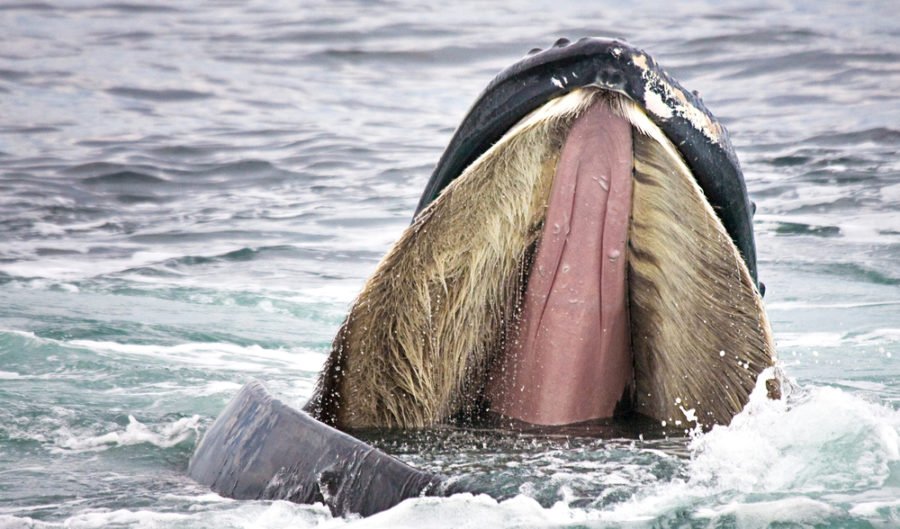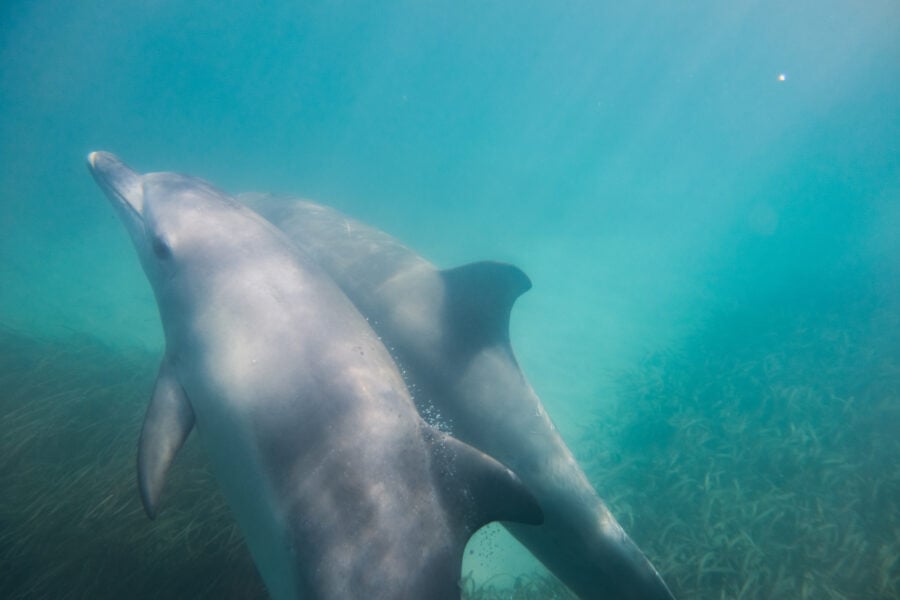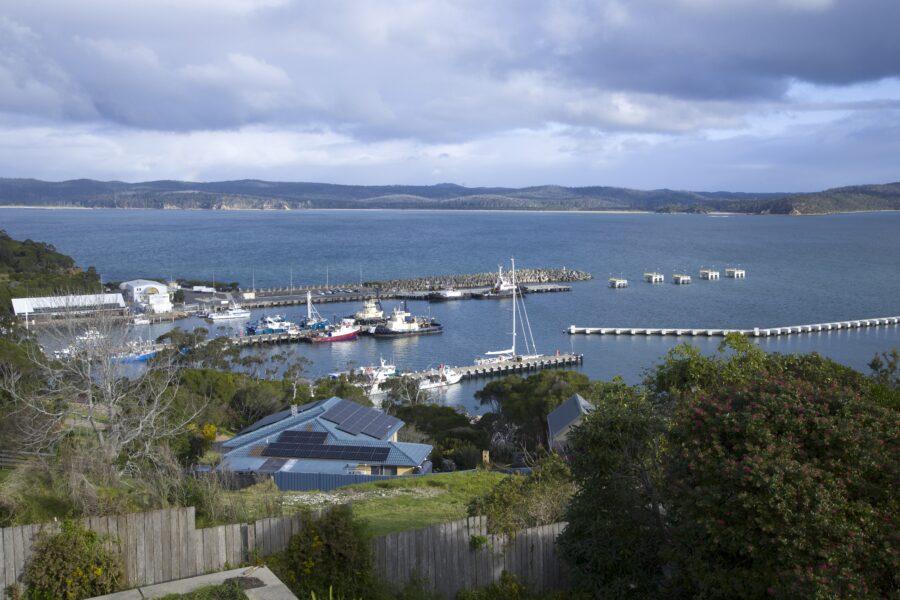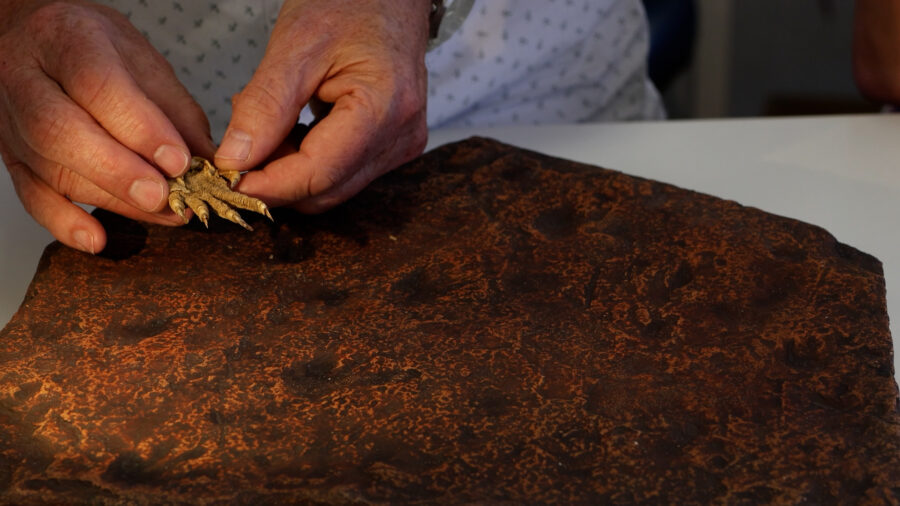Not so nice: new study finds baleen whales were once biters

BALEEN WHALES— those gentle giants of the sea that peacefully glide through the ocean filtering vast amounts of plankton through comb-like structures in their huge mouths — weren’t always so gentle.
According to a new study published today in the Royal Society, the whales’ ancient ancestors used sharp teeth to slice prey. The findings, based on research by palaeontologists from Monash University and Museums Victoria, have turned our understanding of baleen whale evolution on its head.
“It has long been thought that this type of filter feeding was a key feature that led to the evolution of this group,” Museums Victoria palaeontologist David Hocking told Australian Geographic. “But unlike today’s toothless whales, early fossil whales had large teeth with cusps that spread out like the fingers on a hand.
“This led to the idea that these whales may have begun filter feeding using these complex teeth, rather than baleen. Baleen, which grows from the gums, would have evolved later, possibly to fill spaces between the teeth to make a more effective filter.”
Comparing ancient whale fossil to modern-day filter feeders
By observing tooth sharpness in modern filter-feeding seals and early fossil whales the palaeontologists found that, rather than forming a blunt and rounded sieve like a seal tooth, the fossil teeth were sharp, ideal for cutting prey.
David explained they would have inherited this trait directly from fish-eating earlier ancestors such as the ancient whale Basilosaurus. “None of the ancient whales we have studied share the blunt and rounded teeth we find in living filter-feeding seals, and so it is unlikely that any of them had evolved to specialise on feeding using their teeth as a sieve,” he said. “This suggests that these early whales never used their teeth as a sieve, and that filtering must have evolved through an altogether different process.”

A tooth row from a modern crabeater seal, one of the living seal species that filter feeds with its teeth. (Image Credit: David Hocking)
So how did baleen filter-feeding evolve in whales?
A whale fossil affectionately known as Alfred may hold the answers.
“Alfred was a suction feeder, which we know because it has teeth that have been worn down as water and sediment were sucked into the mouth,” David explained. “We think that early baleen whales began to capture prey through suction and, because of this, lost or reduced their teeth.”
The suction process would have allowed for water and prey, such as the tiny crustaceans known as krill, to enter a whale’s mouth, but the water would have had to have been expelled before the whale could consume the krill. According to David, the need to hold prey in the mouth while water was dispelled would have resulted in a build-up of complex tissues on whale gums and these would have evolved into what we now know as baleen.
The setback in understanding baleen whale evolution
While the theory makes sense, David admits our understanding of baleen whale evolution is limited because it relies on knowledge of how these extinct species used their tongue, gums and lips during feeding — and soft tissues aren’t preserved in fossils.
“Because of this, one of the main avenues of research will actually be spending more time studying living species, whose behaviour we can actually observe in the wild,” he said. “By looking at the shape of the skull and teeth in seal, whale and dolphin suction feeders, we can gain a better understanding of what clues we need to look for in fossils, to work out if suction was common in those extinct species as well.”
READ MORE:
- How do whales learn to sing?
- Why do whales strand themselves?
- Return of the killer whales of Eden, NSW.
- Did a 19th-century sailor get swallowed by a sperm whale and survive?




